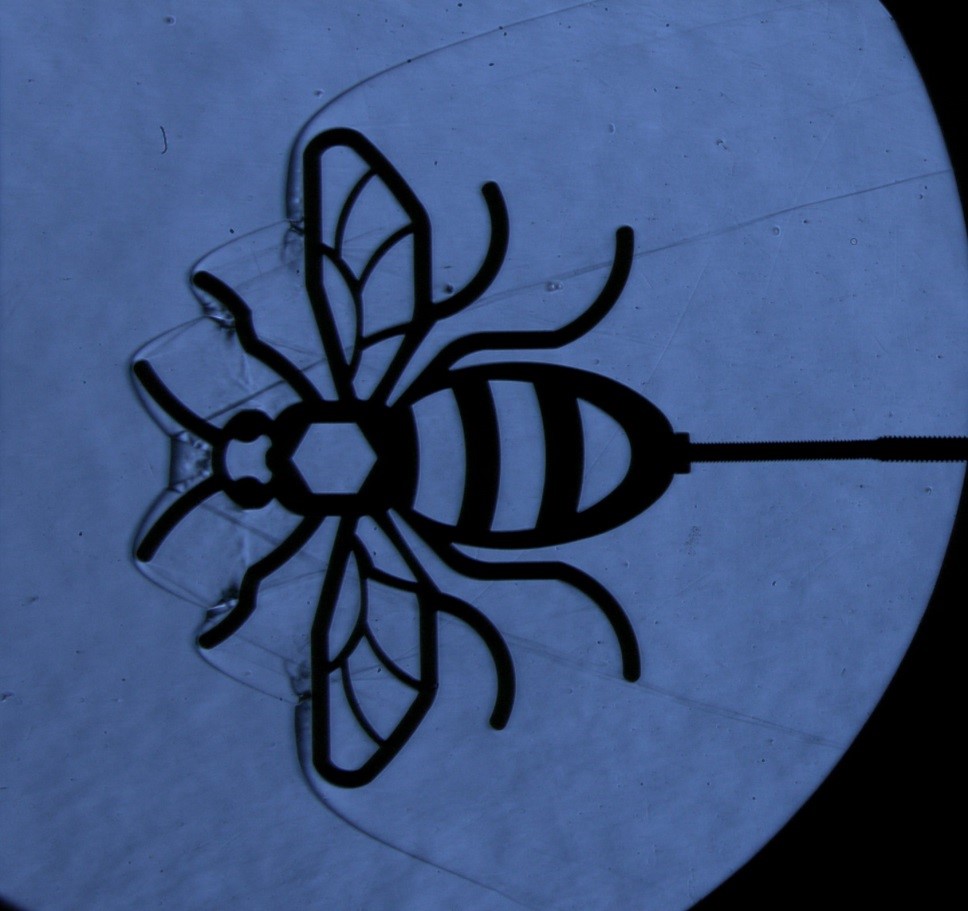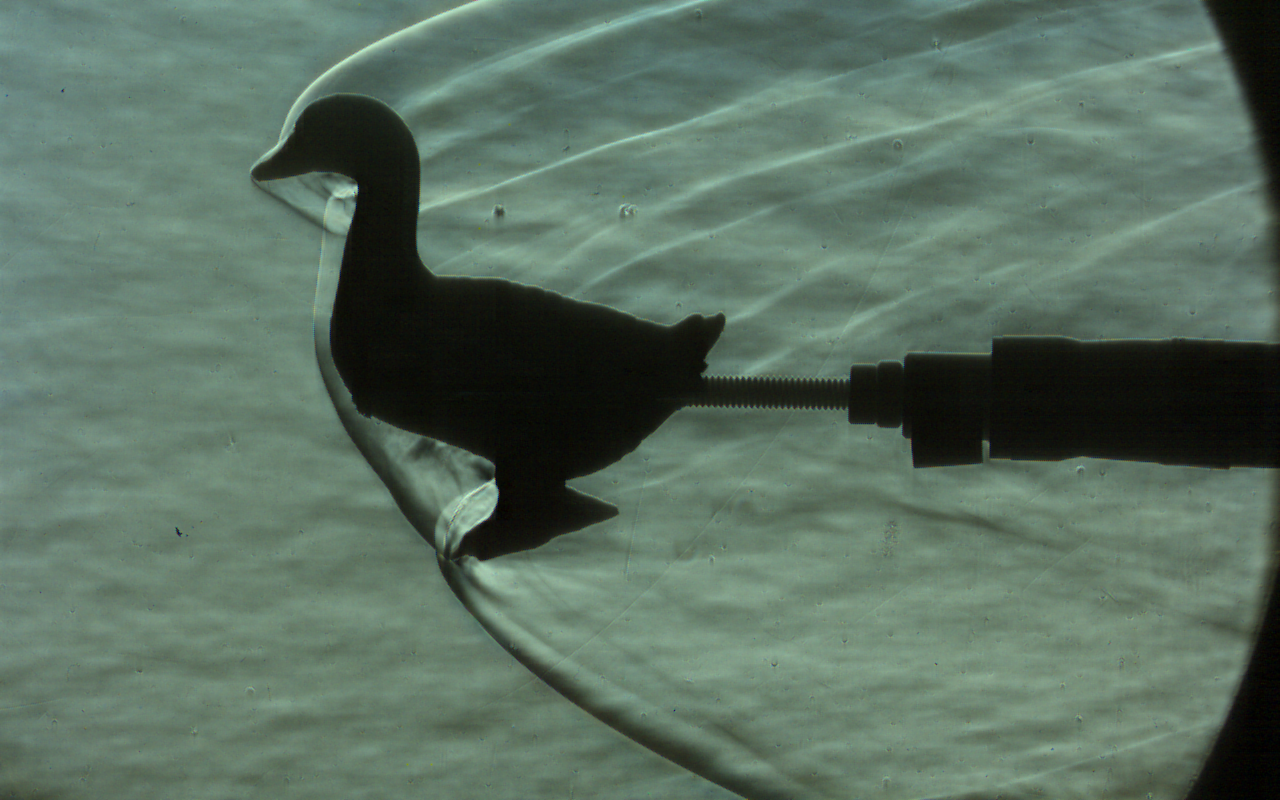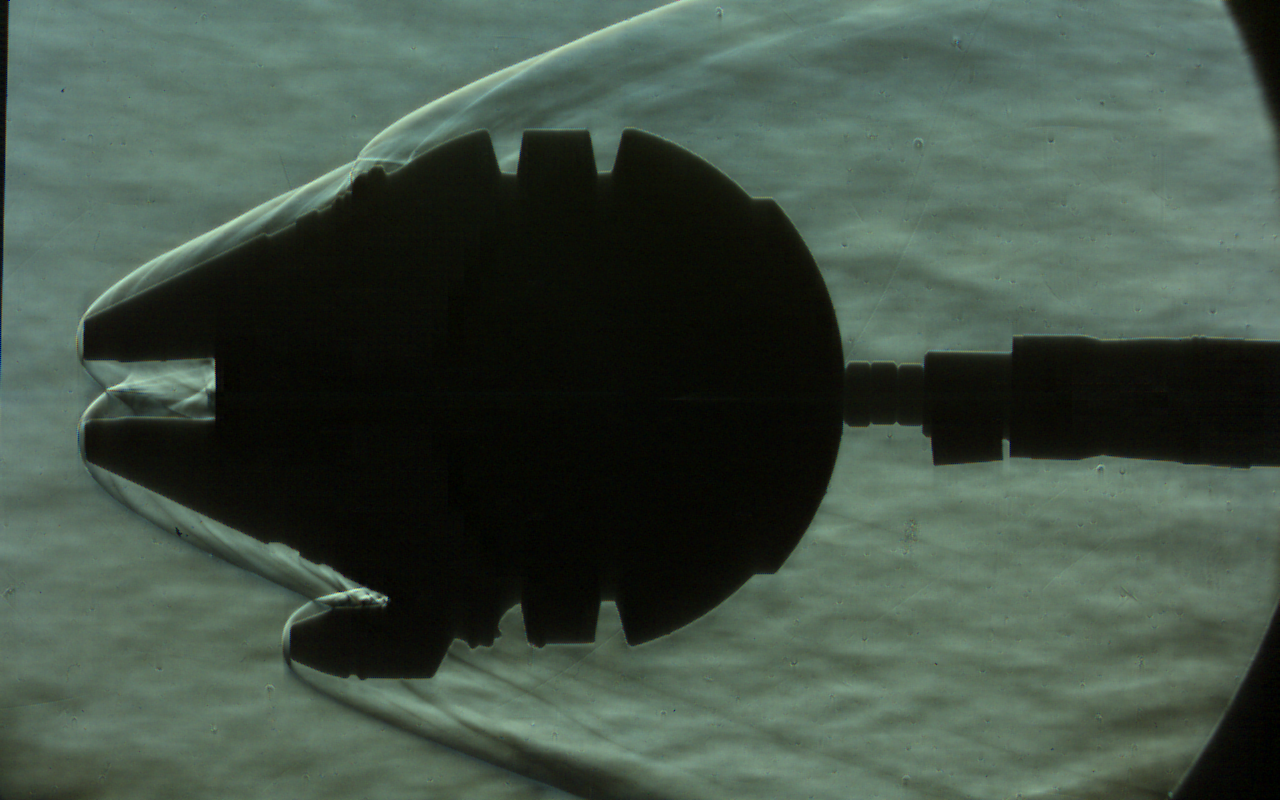Please note: the Soyuz spacecraft and Sokol spacesuit are no longer on display at the Science and Industry Museum. To find out what exhibitions and activities are open today, visit our What’s On section.
In part one of our series on re-entry from space, we looked at the science and engineering that keeps astronauts safe as they return from their missions. But the schlieren technique that shows how shock waves react to the shape of space capsules can be used on any other shape.
These images were done to show the influence that the shape of an object or vehicle has on the shock waves that form around it during hypersonic flight.
Manchester Bee

This is a 2D brass model of the Manchester Bee, which shows very complex shock interactions between the antennae and the head region. Further shock interactions are seen between the shock from the antennae and the front legs and where the shock from the front legs interacts with the shock from the wings. In these regions, very high heating would result.
Hypersonic duck

This is a 3D model of a duck, which again shows the influence of the shape on the shock pattern. Two complex shock interactions are happening under the neck of the duck, and also between the feet and the legs. Neither the duck nor the bee is particularly suited for hypersonic flight!
The Millennium Falcon

The Millennium Falcon was tested to see how a vehicle primarily designed for space, but which had some atmospheric flight, would cope at hypersonic speeds. The notch in the front surface shows a complex shock interaction and reflection occurring between the two side walls, which would result in very strong localised heating. The bow shock interacts with the side of the cockpit and results in a strong series of shock interactions and reflections, which would be very bad for the crew seated in this area.
how does it work?
If you have ever looked down a long road on a hot day, or have been at the airport then you have probably seen a mirage or “shimmering” effect in the air. This happens because the air is undergoing changes in its density due to the heat. When rays of light pass through these changes of density, they are deflected, causing the scene that you see to seem distorted, or “shimmer”.
We call this deflection effect refraction, and we can use this to visualise flows where our density is no longer constant. Compressible flow is ideally suited for this, because the density is no longer constant when we have shock waves or expansions. Using the schlieren technique, we can visualise the flow around objects in compressible flow and understand the flow patterns around them.
The schlieren effect was first discovered by Robert Hooke in 1665 observing a candle flaw with lenses. Since then, it was gradually refined into the powerful optical technique it is today. The word Schliere derives from the German world meaning “streak”, which can be seen in transparent objects with non-uniform density.
Advances in computer image processing techniques have given rise to a new method known as “Background-Orientated Schlieren”. This technique again exploits the deviation of light caused by a change in density, but removes the need for expensive and complex lenses and mirrors. A camera is focused on a speckled background and records two images; one without any density changes, and one with. By tracking the apparent “shift” in the background pattern caused by a shock wave, then an image of the flow pattern can be reconstructed.